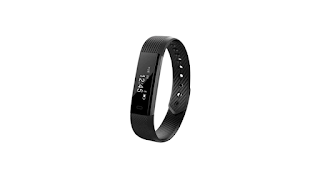Best Anti Barking Device: Is It Helpful? – Buyer’s Guide
Who needs one such device that there is no disturbance due to excessive barking? You need to control your dog’s barking, whether he’s a new puppy who is getting used to his surroundings or a very protective dog who responds to every noise. An excessive barking problem is no joke. You need the best anti barking device in such cases.
There’s no other way dogs can communicate with each other than by barking.
In addition to barking to ward off animals, they also express their needs or are simply bored.
You can get an anti-barking device if you’re getting irritated by your dog’s barking. A variety of modern training options like BarxBuddy and BarxStop are available for domesticated dogs that were originally designed to train hunting dogs. Dog behavior issues may also be corrected with these methods.
The market is flooded with products, so finding one that suits your needs can be challenging. Listed here are some of the most effective anti-dog barking products you can use to stop the noise for good
What is an Anti Bark Device?
Are you able to relate?
You or your neighbors are annoyed by your dog’s barking, but it goes overboard.
Despite your best efforts, it persists.
Woof! Woof!
I know it’s frustrating, but…
Although there are several measures you can take, we recommend investing in modern gadgets like anti-bark collars.
The bark-deterrent collar is a device that can be used during training or for deterring barking. Our guide will cover several models of these, which are discussed later.
What Types of Dog Barking Devices Are Available?
You can purchase several different products to help correct your dog’s excessive barking. Each one uses a different method to deter barking. The underlying principle is the same for all of them.
You can teach your dog not to bark too much by using negative reinforcement.
Collars
Whenever a bark is detected, an anti-barking collar produces an electric shock. This works very much like invisible fences. It is a relatively small device, so your dog is not restricted.
In addition, most often two metal prongs are used to make full contact with your pup’s skin through his fur.
There has been some controversy surrounding shock collars in the past. Earlier models produced considerable shocks. Dogs found these collars particularly unpleasant. These collars were more harmful if misused.
Dogs become scared and often exhibit more destructive behavior as a result. Nowadays, collars are more effective. These collars are limited in the amount of shock they deliver. A static shock teaches the dog to behave better by surprise, rather than injuring him.
Sound Emitters
Using the dog’s unique hearing system, sound emitters are used. People cannot hear the high frequencies a dog can hear.
By blasting higher frequencies, your dog will be surprised when he or she barks. In humans, the sound has no effect, but in dogs, it’s a real turn-off.
Sound emitters function at safe levels during training as with modern shock collars.
Different Types
Sound emitters come in two types. The first type of device is portable, meaning it can be placed anywhere in or outside the house. When it detects a bark, it reacts accordingly.
Second, we have a collar. The collar replaces the shock mechanism with a remote sound emitter, which is similar to a shock collar.
Both devices can be adjusted according to the preferences of your dog. If your dog barks during ultrasonic noise, some devices increase the sound level automatically. You don’t have to worry if you think it’s too much. It won’t hurt your dog’s ears.
Sprays
If you take a proactive approach, you can change your dog’s barking behavior. Sprays can be made of water and citronella. However, dogs find citronella repulsive. Spritzing their faces with water after they bark will provide them with all the negative reinforcement they need. You can purchase collars or nozzles for this purpose.
The collars also work in the same manner as the previous ones. Barking is detected by the collar. Citronella mixture, however, is at the bottom of their necks. When your dog barks, the collar sprays it with Citronella.
Are Anti Barking Devices Safe?
This is a question that all dog owners ask themselves. Incorrect behavior training is aimed at preventing unwanted barking, not at harming your dog. A number of devices can be used without causing any harm. These devices have been tested for quality. Before purchasing one of these products, you should make sure it is properly certified and tested.
It may seem inhuman to use corrective training methods, but their purpose is to get your dog’s attention, not hurt him. In the past, devices were much harsher, but modern devices are designed to be gentler on animals.
Rather than causing pain, it is more of a nuisance. To avoid this, always consult a veterinarian before making a purchase for your dog. Some methods may worsen existing health conditions.
Does My Dog Need an Anti-Barking Device?
An anti-barking device can solve chronic barking. This can help with barking that is too long or unnecessary. Even well-trained dogs will bark occasionally.
Dogs barking at strangers or at squirrels running across your yard is not a cause for concern. Discouragement is not the way to deal with it. Barking training is designed to prevent excessive barking.
The training devices are also important to keep in mind. They shouldn’t be used constantly throughout their lives. The training process can be started when they begin to bark the most. You could be leaving the house for work, or your pet may be alone in the crate at night.
Eventually, your dog will stop barking excessively and begin to learn. Afterward, you should stop using the products and only use them as a light reinforcement from time to time.
How to Choose an Anti-Barking Device?
Choose from a wide variety of products to correct the behavior of your dog if you are looking to invest in one. You need to choose the right product for your pooch carefully in order to ensure its safety and effectiveness.
Do Some Research
You should always do your research before purchasing a product. If you’re in a pet store, don’t pick the first product you see. It’s often the recommended products that don’t suit your dog’s needs. Instead, they’re from an advertiser who has spent a lot of money on those extra materials.
Review a product’s reviews.
Finding out what real dog owners think about a device can give you a lot of information about its effectiveness. Learn about how to maximize your investment and get valuable tips from the experts. Be sure to also examine the manufacturer. Invest in pet products from reputable brands.
Look for Certifications
Animal-friendly products are available. Their effectiveness and safety might have been tested rigorously. Applied Animal Behaviorists have tested the best products to use.
Look for Adaptive Settings
Your dog must respond to a device in order for it to be effective. The truth is, some dogs have more resilience than others. Your dog may ignore all warning signs and continue to bark. You will need something that has multiple settings if that is the case. Automatically changing the strength is the best option.
Limits
Older devices caused more harm than good to dogs because they were too strong for them. Those devices are still available. They’re largely ignored by pet owners, but they’re easy to pick up by accident. Ensure that these devices are safe for dogs by reading their owner’s manuals.
How to use an anti-bark collar?
A dog owner must consider several things before using an anti-bark collar on their pet. You should let the collar remain on the dog for a minimum of two weeks without turning it on. As a result, the dog will become accustomed to its’ new adornment without realizing what it will eventually be used for. As the collar is being worn for the first few times, the owner should remain nearby to ensure the collar doesn’t fall off accidentally. It is possible to turn the collar on once the dog has become accustomed to wearing it.
To ensure the safety of their animals and to ensure the collar’s functionality, owners should carefully read the user instructions. Anti-barking collars should not be used on dogs under six months of age or under eight pounds, for instance. The dog should not be wearing an anti-barking collar during walks, and it should not be on for longer than 12 hours per day so that the dog can decompress, unwind, and most important, to understand the purpose of the collar.
Lastly, before choosing an anti-bark collar, a specialist should be consulted as some dogs may be anxious or stressed and may react negatively to certain collars, requiring specific training adaptations for their specific needs.
Conclusion
Excessive barking doesn’t have to last forever. There are plenty of tools to help you stop it. With the right device your dog will learn to remain quiet when it is necessary by receiving a gentle reminder.




Comments
Post a Comment